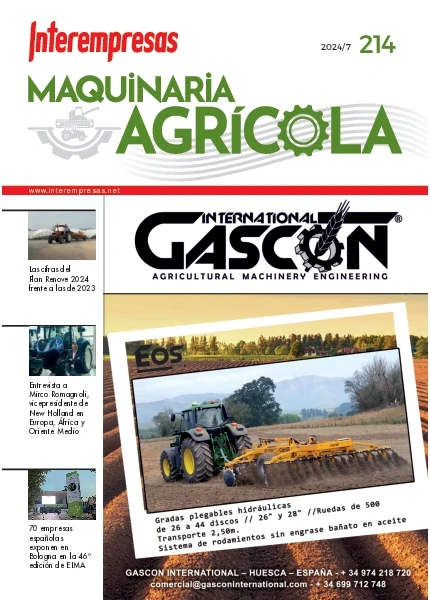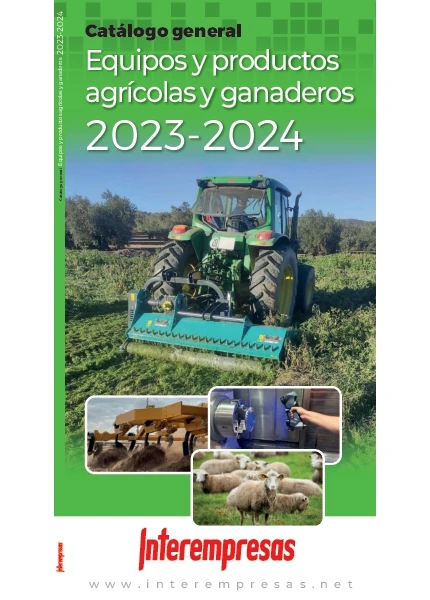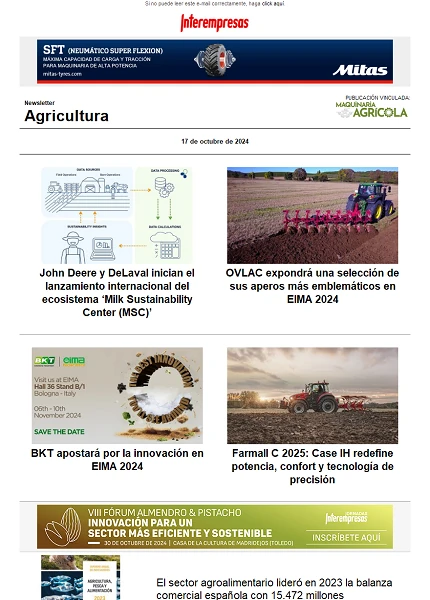Flexible systems of sostenimiento for the stabilisation of big taludes
To finals of the 80 began to use in Switzerland the network of wire of steel for the stabilisation of taludes of floors. Initially they did not exist methods of design of these systems. From 1993 they begin to develop in Spain studies directed to define a procedure of analysis and design, having the collaboration of the Laboratory of Structure of the University of Cantabria. Of this form, developed a system of stabilisation of taludes, using networks of cables of steel combined with bulones active or passive.
Along the years 90 these systems have come employing successfully increasingly and in emplazamientos of greater responsibility. Recently it has developed a new flexible system for the stabilisation of taludes, which employs a new compound membrane by a wire mesh of steel of high elastic limit, Tecco G-65 (S).
In the present work presents the greater experience of application with networks of cables of steel and bulonado active, in the Disassemble of Saint Antolín of the Autovía of the Bay of Biscay, as well as the employment of the new system Tecco G-65 (S-15) passive in Saint Antolín and another application in the variant S-30 until S-55 Active, in the Autovía of the Northwest, in the stretch Villafranca of the Bierzo-Ambasmestas.
Introduction
These systems presented the novelty to be open systems, the components of which can select by means of the manuals of design, to satisfy a determinate level of support in accordance with push them that it exerts the macizo.
The first flexible systems racionalmente conceived of allocated to treatments with passive anchorages. In 1996 it developed like pioneering experience in the world, the technician of the employment of flexible systems with active anchorages. From this moment and with the improvement of the procedures of analysis and design and the development of the technician of installation, modifies the denomination of the solutions until this moment employed and the flexible systems of stabilisation of taludes with networks of cables, independently of the capacity of support of the same, identifies him eat: Pentifix Passive, for the treatment of taludes of rock fracturados with bulonado passive; Pentifix Activate for the treatment of taludes of rock fracturados with bulonado active, and Pentifix Soil Passive for the treatments taludes of floors and loose materials with bulonado passive.
In the second half of the 90 developed a wire mesh of steel of high elastic limit, the mesh Tecco Mesh G-65. After an intense work of investigation and development, supported by multiple essays of laboratory for the evaluation of the characteristics of the membrane and of a procedure of analysis and design based in a precise and rigorous physical modelling-mathematical of the work of the system, has obtained a new flexible system designated Teccoâ Mesh G-65 (S). This system is by the moment, the last step of the application of flexible membranes to the sostenimiento of taludes.
Objective of the work
The present work has like aim expose the most recent experiences purchased in the application of flexible systems of sostenimiento for the stabilisation of big taludes employing networks of cables of steel (flexible membrane isotrópica), as well as with the new flexible membrane anisotropic, the mesh Tecco Mesh G-65.
Will present the two last installed treatments in Spain, with these two systems, different in the materials employed, although similar in the concept and the philosophy of work. The Flexible System Pentifixâ Activate and the System Tecco Mesh G-65 (S), in two variants, the S-15 Passive with support of 15 kN/m2, and the S-30 to S-55 Active, with supports between 30 and 55 kN/m2. The first used in the stabilisation of a talud of disassemble in the Autovía of the Bay of Biscay To-8, in the Stretch Llanes-Llovio (Disassemble of Saint Antolín); and the second in the disassemble situated in the accesses to a tunnel in the Autovía of the Northwest To-6, Stretch Villafranca of the Bierzo-Ambasmestas (PK 706+400).
Disassemble of Saint Antolín
The Disassemble of Saint Antolín finds inside the outline of the Autovía of the Bay of Biscay, in the stretch Llanes-Llovio, inside the autonomous community of the Principality of Asturias. This stretch was built by Llanes-Llovio UTE, formed by Nesco, and Bridges and Shod. The technical Assistance of the work developed it Norcontrol.
The Disassemble in question presents some geological conditions complicated. The zone of emplazamiento coincides with the inferior part of a big disassemble crossed diagonally by a big fails, which forms to level of the sea the Beach of Saint Antolín. It fails it has an orientation of some 30º regarding the steering of traces it. The contact this of fails it, perfectly defined by a plane subvertical with collapse to the zone milonitizada, limits with a powerful macizo of quartzites stratified (arenisca of quartz with intercalations of quartzites melted and of sands) and intercalations of strata of sediments areno-arcillosos sobreconsolidados.
The stability of this macizo of enormous height, depends of the support of the present materials in the zone of fails. The zone failed, is composed by the rock triturada of fails it, with intercalations of bands totally sandy no cementadas and of bands of terrains of sands silt-arcillosos.
Between the PK 14+800 and 14+880 presented a problem geotécnico of dump of strata, although these were not parallel to the talud. This was due to the fact that the floors desagregados of the zone of fails do not present a stable support to contain the macizo of quartzites stratified, those that when lacking support, pandean and open, causing a dump generalised of the strata. If this phenomenon does not control in the foot (the last 60 m of the disassemble) this phenomenon can engage the general stability of the macizo, which has a height of around 150 m.
After several attempts of stabilisation based in successive excavations to diminish the slope combined with gunita anchored, that fracasaron, Nocontrol realizar a detailed study geotécnico in which it gave solution to control the dump by means of the stabilisation of all the inner zone of the band of fails linked with the stability of the zone this of the macizo applying a continuous support with networks of cables of steel, combined with bulonado deep.
 Appears 1. Detail of the installed system in the zone of the foot. |
The study of Norcontrol defined three bands with distinct supports: an upper band, of 21 m of development and 25 kN/m2 of support; an intermediate of the same size and 28 kN/m2 of support and another inferior, until the foot and of 25 kN/m2.
From these levels of necessary support design the system of necessary support, deciding the installation of a system PentifixâActive composed by network of cables Tecco TD-30 in cloths of 3x3 m, anchored with bulones type Gewi of 32 and 40 mm of diameter and 12 m of length, according to the necessary support (Figure 1).
The installed network has a resistance the traction of 175 kN/m, and is able to offer a total support of 419,1 kN in conditions of break for the size of cloth used. For factor of hygiene of 1,67, the values of resistance to traction and of total support are 105 kN/m and 251,5 kN respectively.
The technical parameters of the solution employed have been:
· Surface treated: 4.860 m2
· Development of the disassemble: 60 m
· Length of performance: 81 m
· Slope of the talud: 40-55º according to the zone
· System of active support: 25-30 kN/m2
upper and inferior Bands
· Network of cables TD-30 (150 mm of light)
· Cables of reinforcement Ø = 20 mm
· Anchorages type GEWI Ø = 32 mm
· Length of anchorages: 12 m
central Band
· Network of cables TD-30 (150 mm of light)
· Grid of 3 x 3 m
· Cables of reinforcement Ø = 22 mm
· Anchorages type Gewi Ø = 40 mm
· Length of anchorages 12 m
· Perforación for anchorages: 6.240 m
· Perforación for drainages: 1.000 m
Once totally defined each one of the elements of the system, in April of 2000 began the work, finalising this to first of September of the same year.
One of the difficulties that presented in the execution was the need to excavate at the same time that it went installing the system. This sequence of work forced to drill and inject the bulones before planting the cloths of network, what demands that the bulones are situated previously in the exact position of the knots of anchorage, coincident with the corners formed by four cloths of neighbouring network. Usually in taludes excavated, plant the networks and afterwards proceeds to the execution of the perforación.
In the case that occupies us, and because of the need to go attaching the talud at the same time that it excavated, this was impossible in spite of the big care that had with the replanteo of the bulones, when being the talud a surface alabeada. For obviar this difficulty decided realizar the sewed of the cloths with wire of steel of 10 mm of diameter, independizando the cables of load of the ones of sewing and going through them the heads of the bulones.
The another big operative difficulty was the perforación of the bulones, since practically the third part of the almost 7.000 m had to tube, with the encarecimiento and loss of performance that this ocasiona. This was due to the presence of lens of sand that prevented to keep the cane of the taladro of the perforación open until the placing of the bars and the realisation of the injection with whitewash of cement.
The injection of the bulones realizar with cement of high quality and a relation To/C = 0,4 and with the addition of products plastificantes for the improvement of quality of the whitewash.
 Appears 2. Execution of the perforaciones for the anchorages. |
The sequence of installation carried, as it appreciates in the figure 3, by successive banks from the coronation until the foot. The slope of the excavation, allowed the installation of bands of 25 m of development without putting in danger the stability of the disassemble. These bands planted and preinstalaron, proceeding by bands of 25-30 m of width to the realisation of the tightened of the bulones until the clear-cut loads in the project.
 Appears 3. Sequence of installation of networks and anchorages. |
Back to the application of the loads of tightened in all the bulones of the system, the network of cables, the cables of reinforcement in the knots of anchorage work like element of reaction in the head of the anchorages, independently of the state of deterioration of the terrain, serving the network of cables with the mesh of triple torsion that closes it between this and the surface of the talud, like an element of application of load distributed in all the surface. The system of connection of the network to the cables of reinforcement and in command of the anchorages, as well as the system of flexible anchorages and tightened perimetral, allows that the network yield together with the plates of support during the tightened and support the surface of the terrain, avoiding besides the future erosion of the surface treated.
 Appears 4. Detail of the system in the zone of the coronation. |
The control of the erosion that produces the system as I complement to his effect stabilizer, has allowed that in a terrain very fracturado and quite sandy, with important flows of water and after a rainy winter, keep the surface inalterada and that besides with a simple treatment of hidrosiembra, have attained an integration amortiguación of the visual impact of a disassemble of similar magnitude.
A year after finished the installation of the system, this has comported satisfactorily and finds totally integrated in the landscape.
In the Figure 5, observes a sight of the treatment finished. In spite of the multiple drain and the sandy character of the surface as well as the absence of vegetal cover, given the humidity of the surface the final result is evidently satisfactory.

Appears 5. System finished and integrated in the landscape.
Treatment with Tecco Mesh G-65
In the zone this of the previous treatment, projected a system of sostenimiento passive for the containment of coin them unstable with exits to the face of the disassemble that they produced in the zone of strata of quartzites. The solution proposed by Norcontrol, went the one of the employment of the new wire mesh of high elastic limit Tecco G-65 (S-15). Treatment with bulones passive and an able superficial membrane to contribute a unitary support of 15 kN/m2 in all the surface.
The technical parameters of the solution employed appear to continuation:
Emplazamiento in front of the sea, what requires materials of special quality against the effect of the corrosion.
· Surface treated: 1558 m2
· total Height of the disassemble: 40 m
· Slope of the talud: 60º
· Development of the treatment: 38 m
· Length of performance: 41 m
· Diameter of the wire: 3 mm
· Type of wire: 1770 - 2100 N/mm2
· Treatment Supercoating
· Cables of double horizontal reinforcement of Ø = 16 mm
· passive Anchorages type Gewi of Ø = 25 mm
· Length of anchorages of 3 - 4 m
· Pattern of anchorages 3 x 3 m
In the photo that appears in the figure 6, observes the left side (This) of the disassemble of Saint Antolín. The treatment with mesh Tecco, interrupts to a height of 6 m of the foot of the disassemble. Underneath of this existed a wire mesh of triple torsion, which was planted in all the zone this, but in the zone of the quartzites resulted insufficient and appeared detachments in the zone of the coronation.
In the figure 6, appreciates the mesh Tecco and the cables The environingingmental impact of the system is practically invalid, allowing besides, to the equal that in the previous case, the application of a treatment with hidrosiembra.

Appears 6. Appearance of the treatment with Tecco finished.
Performance in the disassemble 12, Autovía of the Northwest To-6, stretch Villafranca of the Bierzo-Ambasmestas (PK 706+400)
With the presentation of this application has like aim expose the experiences purchased in the application of the mesh of high elastic limit type Tecco G-65 in the stabilisation of a slope with a coverage of coluvión reptante situated in the top of a disassemble to the entrance of one of the tunnels of the autovía of the northwest.
This stretch was built by Bierzo UTE, formed by the companies Necso, ACS and Tecsa. The technical assistance of the work developed it the company Typsa.
The project geotécnico was realizar by the company Typsa, determining a half thickness of the coluvión of some 10 m and an angle of the talud of the disassemble of 42º, to intercept the coluvión in the contact with the rock. In this zone leaves a berma and afterwards continues with a talud of similar slope in rock pizarrosa until the level of the shod, with a development in the order of 80 m. In these conditions, determined that the necessary support for the stabilisation of the coluvión of the top would be of 1.550 kN/m.
The system of sostenimiento proposed consisted in three contiguous bands of treatment with mesh Tecco G-65 (S) reinforced with horizontal cables. In the upper and inferior bands, employed the mesh Tecco G-65 of 3 mm of diameter of wire, combined with a grid of bulonado of 2,5 x 3,5 m of vertical developing separation and horizontal respectively combined with anchorages Gewi of 32 mm of diameter, for a pressesure of sostenimiento active of 28 kN/m2.
In the central band of the treatment, employed the mesh Tecco G-65 of 4 mm of diameter of wire, combined with a grid of bulonado of 2,5 x 3,5 m of vertical developing separation and horizontal respectively combined with anchorages Gewi of 40 mm of diameter, for a pressesure of sostenimiento active of 43 kN/m2. The technical parameters of the system appear in the following table:
· Tecco Mesh G-65 Ø = 3 mm
· Cables of double reinforcement Ø = 20 mm
· active Anchorages Gewi Ø = 32 mm
· Length of anchorages 9 - 16 m
· Pattern of anchorages (30 kN/m2) 2.5 x 3.5 m
· Pattern of anchorages (35 kN/m2) 2.0 x 3.5 m
central Band
· Tecco Mesh G-65 Ø = 4 mm
· Cables of double reinforcement Ø = 24 mm
· active Anchorages Gewi Ø = 40 mm
· Length of anchorages 9 - 16 m
· Pattern of anchorages (45 kN/m2) 2.5 x 3.5 m
· Pattern of anchorages (55 kN/m2) 2.0 x 3.5 m
The pressesures of sostenimiento, by needs of the geometry of the disassemble in some zones elevated until 35 kN/m2 for the mesh of 3 m and until 55 kN/m2 for the mesh of 4,0 mm.
The system installed with bulonado active, with a load of installation of 150 kN for the bars of 32 mm and of 250 kN for the bars of 40 mm.
The lengths of bulonado that appear in the diagram, were modified during the execution, being the minimum lengths of anchorages of 9,0 m.
The execution of the work initiated, with a way of access in the coronation for the emplazamiento of the equipment of perforación. The sequence of the treatment carried from the highest zone rightwards PK 706 + 670 and went down by bancadas of two lines of bulonado. The system of anchorages complemented with a grid of Californian drainages of 10 x 10 m and 20 m of length.
The half development of the disassemble executed was of 30 - 35 m, being the start of the treatment in the PK 706+420.
The total volume of the performance in the top was of 6.400 m2 of treatment, 9.800 m of perforación for anchorages and 1.200 m of perforación for drainages.
In the figure 7, observes the start of the works of excavation in the high zone of the disassemble and the start of the perforación for the anchorages of coronation and the first lines of bulones.
The zone of performance coincides with a contact of fails that it appreciates at the end between the pure quartzites and the zone of fails in transition and alternations of quartzites and blackboards.
In the right extreme observes the movement suffered by the disassemble, which can appreciate by the stair that produces in the contact with the wall that limits fails it. Together with the movement of the disassemble produces the fracture and perforación of the gunita.
 Appears 7. Start of the works of perforación. |
In the photo that appears in the figure 8, observes like the treatment of stabilisation executed initially with gunita, when being subjected to a push of the terrain, being a material fracturado, the plate of mortar projected results insufficient and fails by the zone of the head of the anchorage.
Can observe that the continuous bar anchored in stable zone, however the plate has displaced to the outside.
 Appears 8. Punzonamiento Of the gunita. |
In the figure 9, appreciates a sight of the partially installed treatment. It stands out the difference between the cables of reinforcement of the upper zone where the bulones already have been loaded with the inferior rows, where is in process of setting.
The loads tightened during the installation, carried until the 150 kN for the bars Gewi of 32 mm, planted in the zone of mesh of 3 mm of diameter.
In the zone of the mesh of 4 mm of diameter and anchorages Gewi of diameter 40 mm, the loads of tightened of the bulones during the installation carried like minimum to 250 kN.
In the image is slope the cut of the bars and the application of treatment anticorrosivo to the extreme of the anchorages.
 Appears 9. System Tecco Mesh G-65 (S). |
In the image of the figure 10, appears a general sight of the installed treatment Is to stand out that during the final stages appeared movements of the disassemble, in the right zone in the vecindad of the contact with fail appearing movements and cracks in all the system.
The flexibility of the same and the high capacity of load that presents, made possible the accommodate of these movements without that generated the failure of the system.
In the overburden zone realizar proofs of load in the anchorages. It is to stand out that during the proofs loads that they realizar to the bulones in the overburden zone, in several bars of 40 mm, arrived to loads in the cats of 52 t, without that could separate the plates of support of the cables of the nuts.
In other zones realizar twelve or thirteen similar proofs, registering loads in the bulones that reached or exceeded the 40 t. It is these same zones, where the terrain had not displaced, from the 20 t for the bars of 32 and 25 for the ones of 40 mm roughly, the bulones continued taking load, producing the separation of the plates of the nuts of the head.

Appears 10. General sight of the treatment concluded.
Conclusions
The flexible systems of stabilisation of taludes, already are in the version of networks of cables as with the new wire mesh of steel and high elastic limit, present an effective solution for the treatment of taludes of any type of terrains, when it does not present a surface of stable and durable support for the bulones.
The so much active systems like passive have showed to comport satisfactorily.
The flexible system that employs the new membrane Tecco G-65, can surpass slightly the capacity of support of the most powerful system executed previously with networks of cables, located in Saint Antolín.
The system Tecco G-65 (S) with mesh of 4 mm of diameter, can arrive to exhaust the resistance of the bars of 40 mm, whenever the system of reinforcement allow it. With this mesh and double cables of reinforcement of 24 mm, have reached values of support of 55 kN/m2 with a factor of hygiene in the order of 2.
All the systems employed present a low or despicable environingingmental impact, with the possibility to apply any technician of revegetación, from the simplest as it is the hidrosiembra to other more elaborated.
For more information:






























































